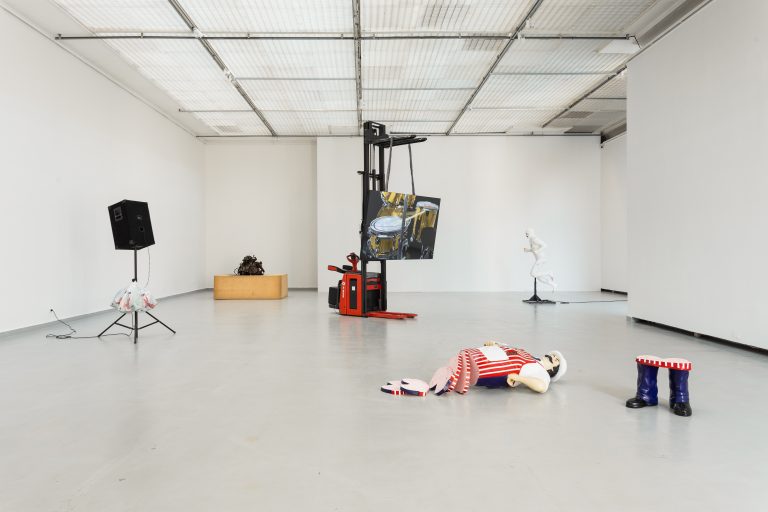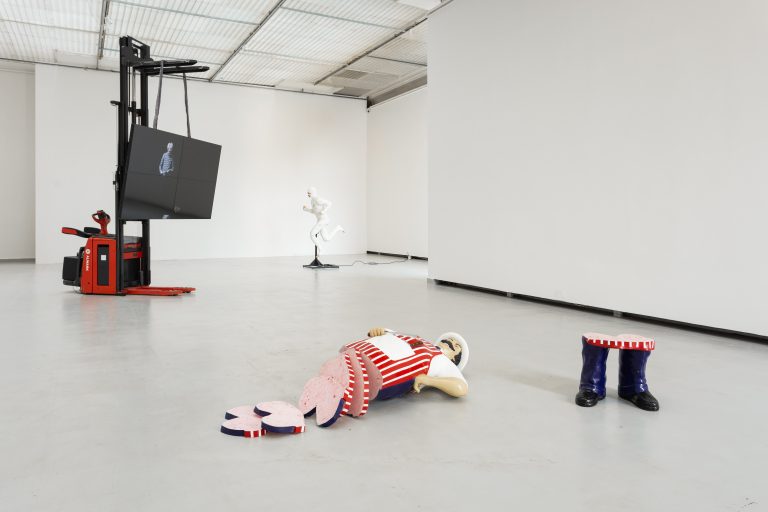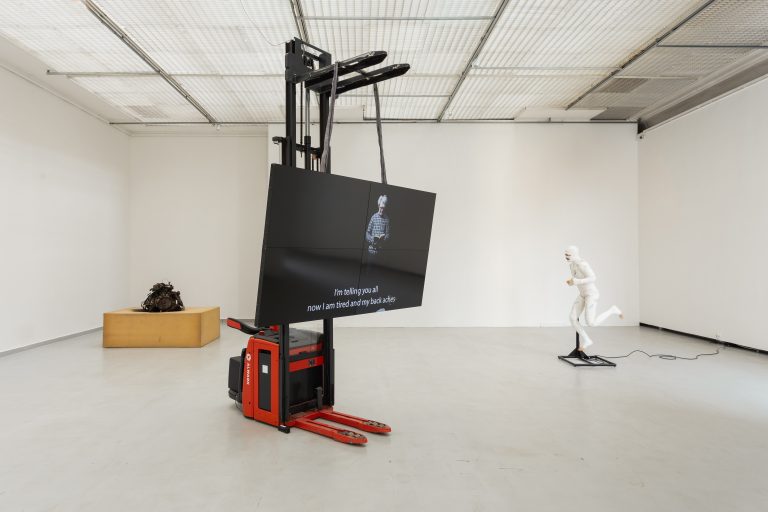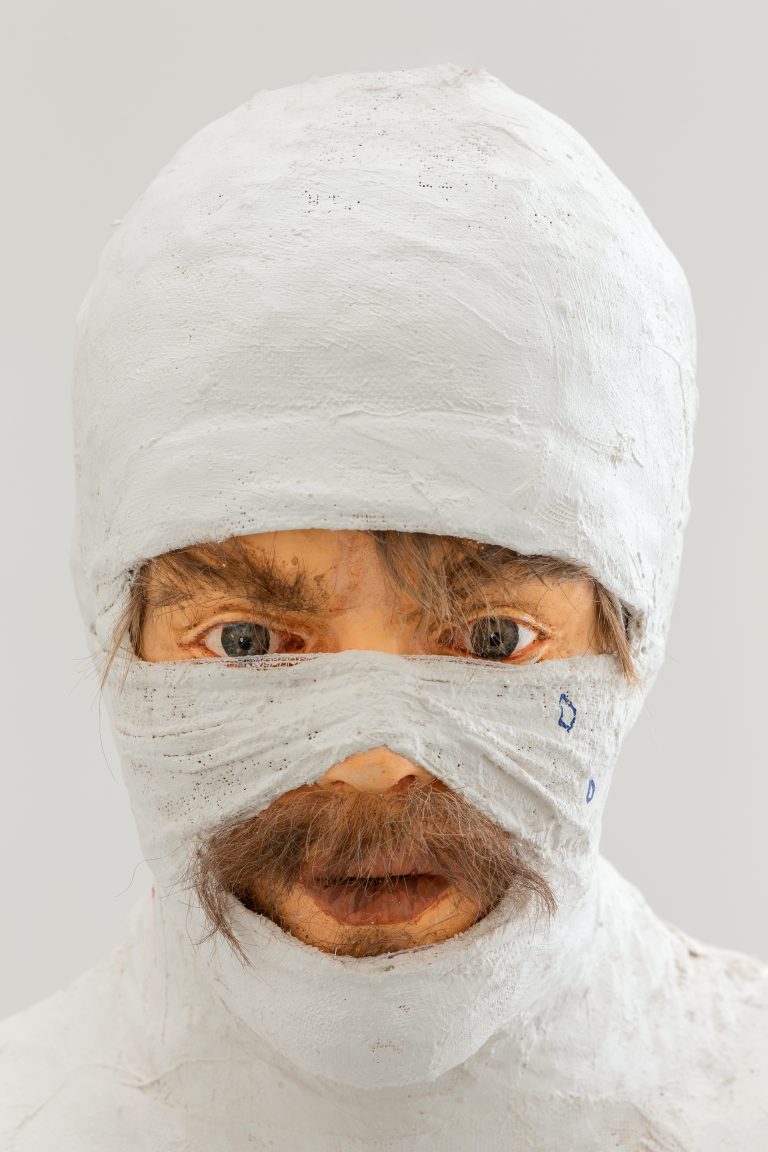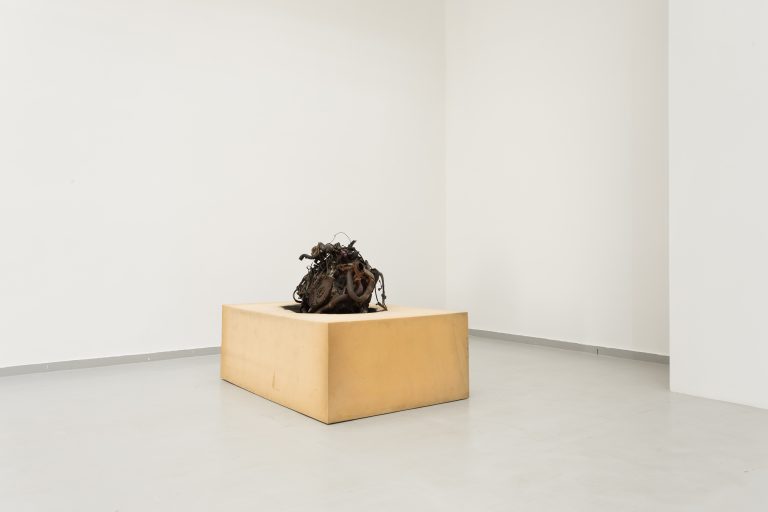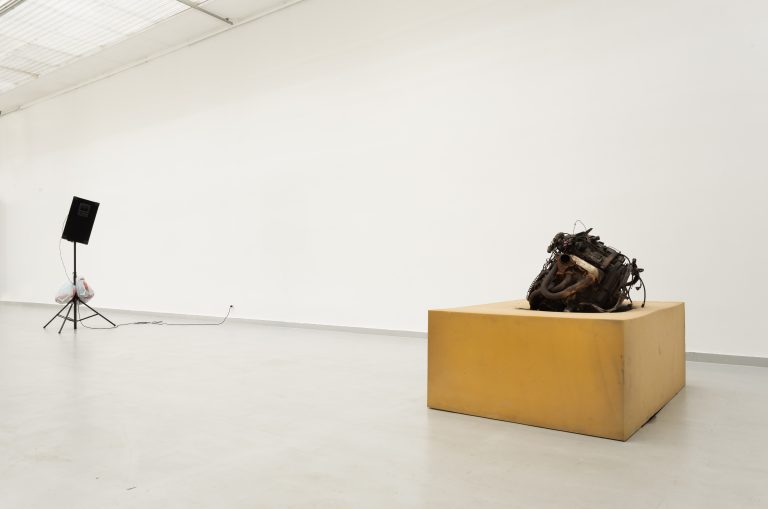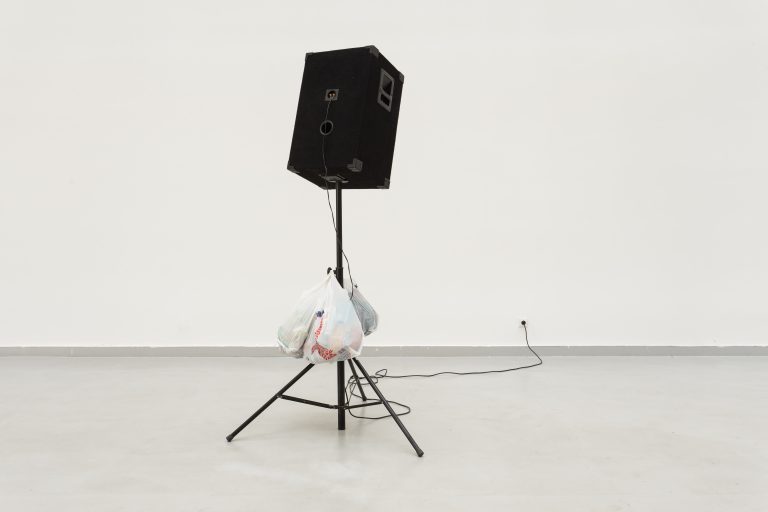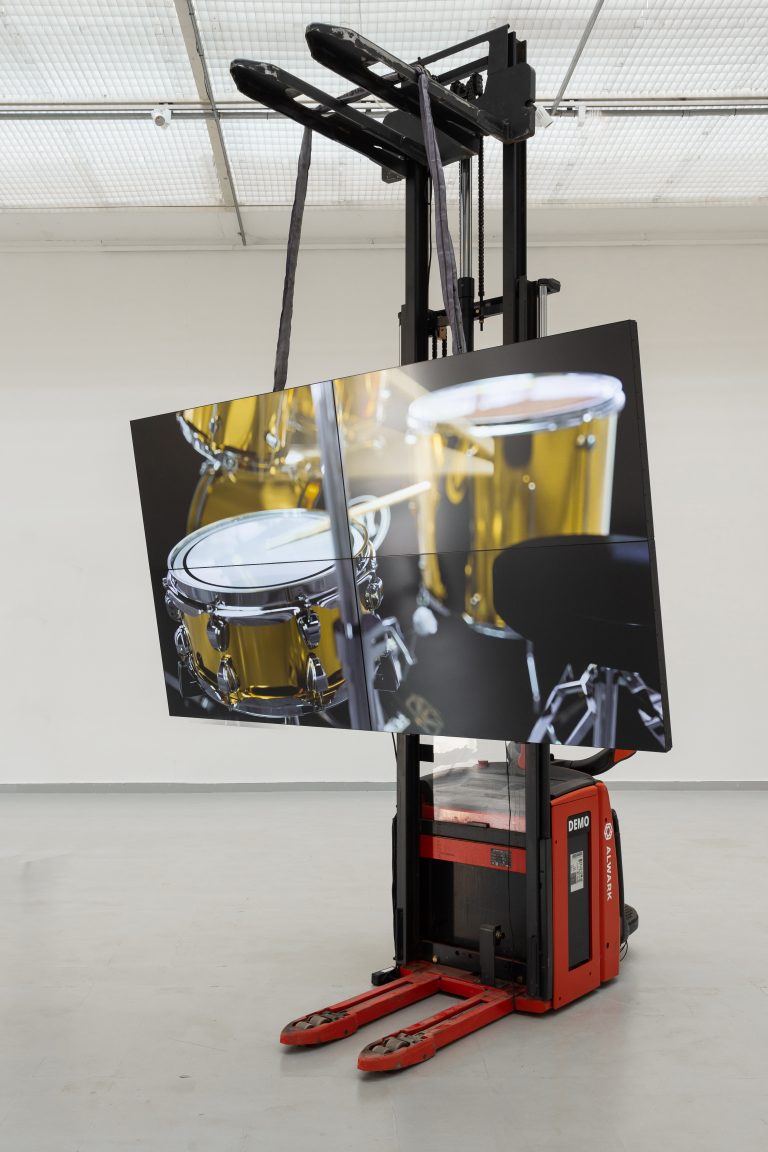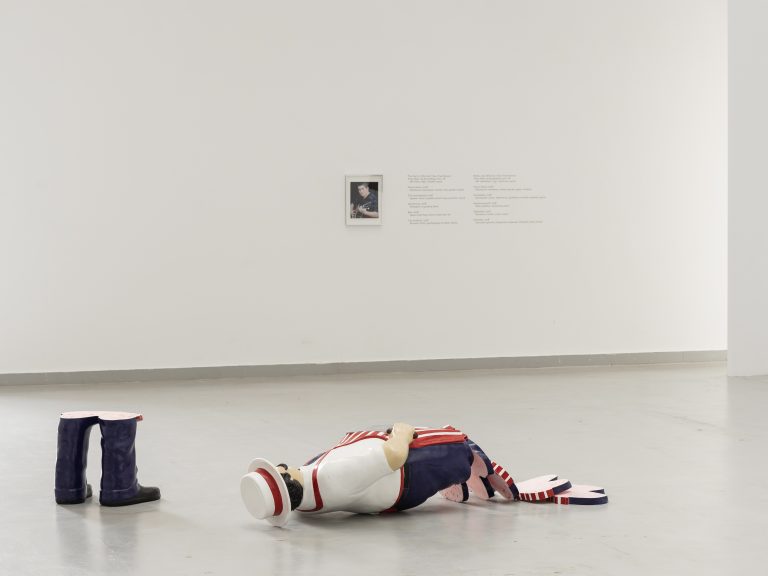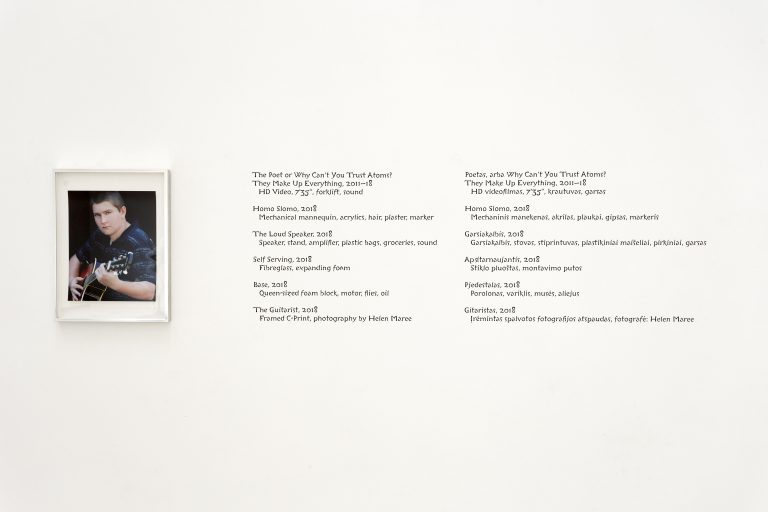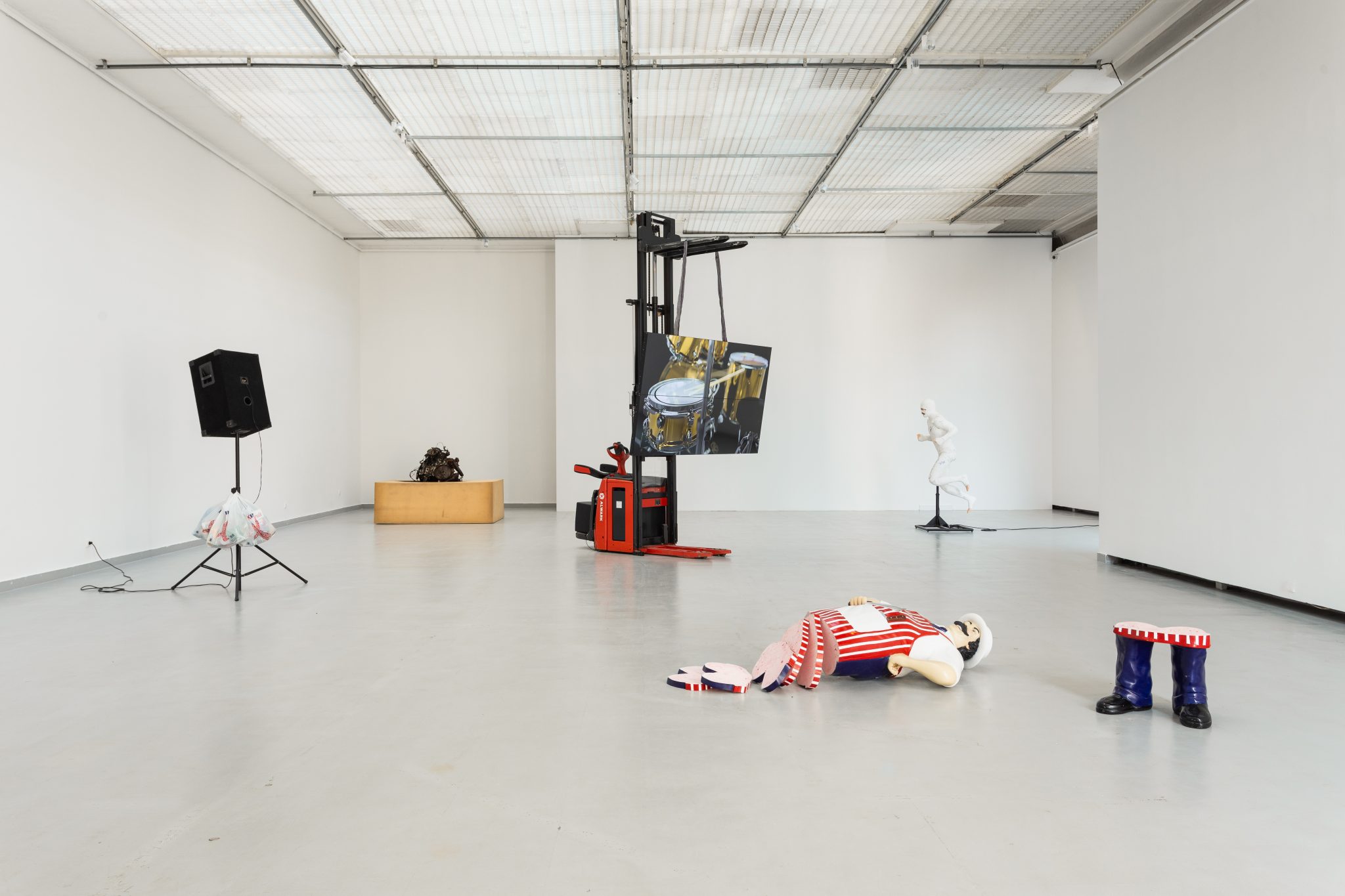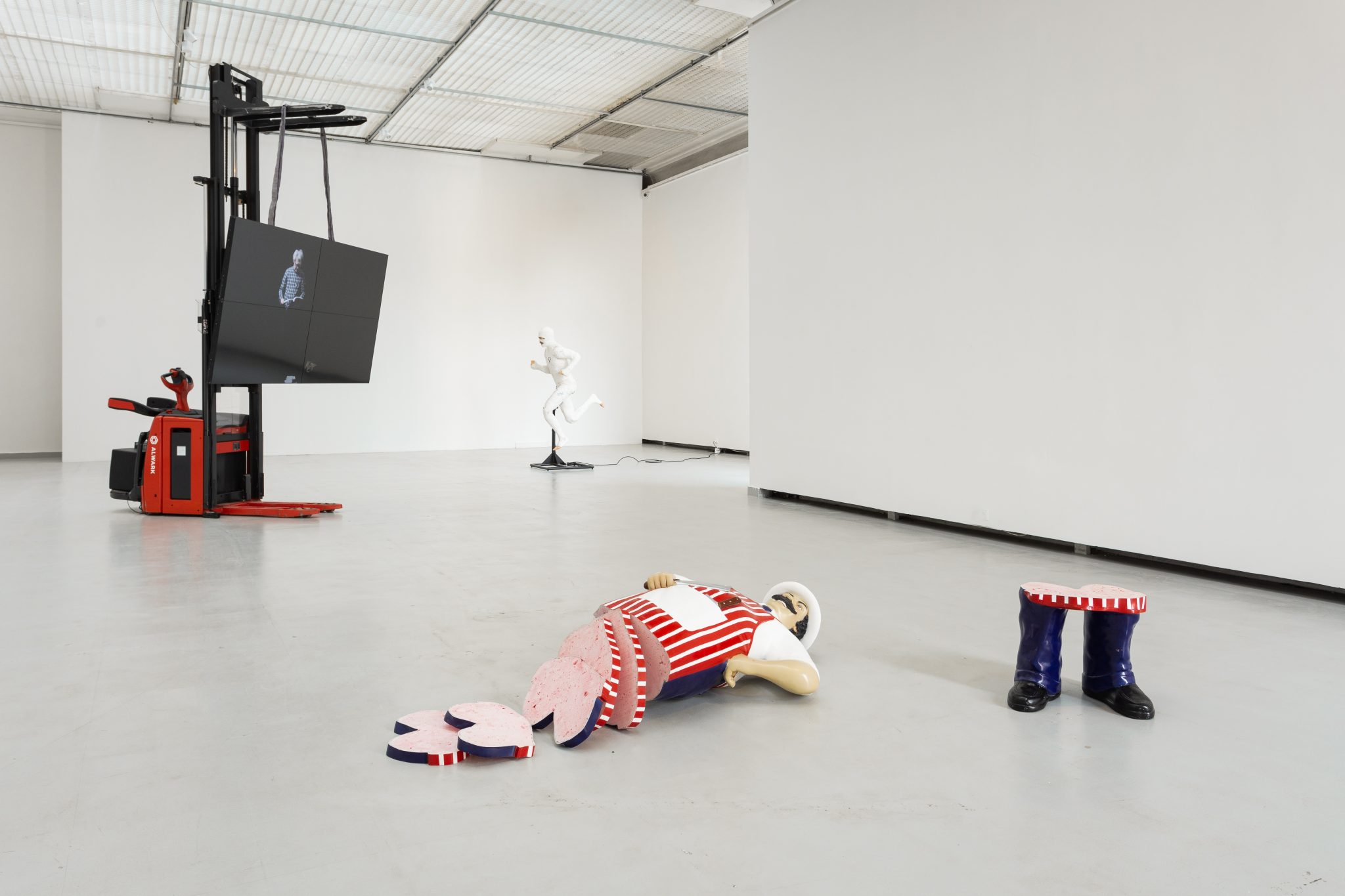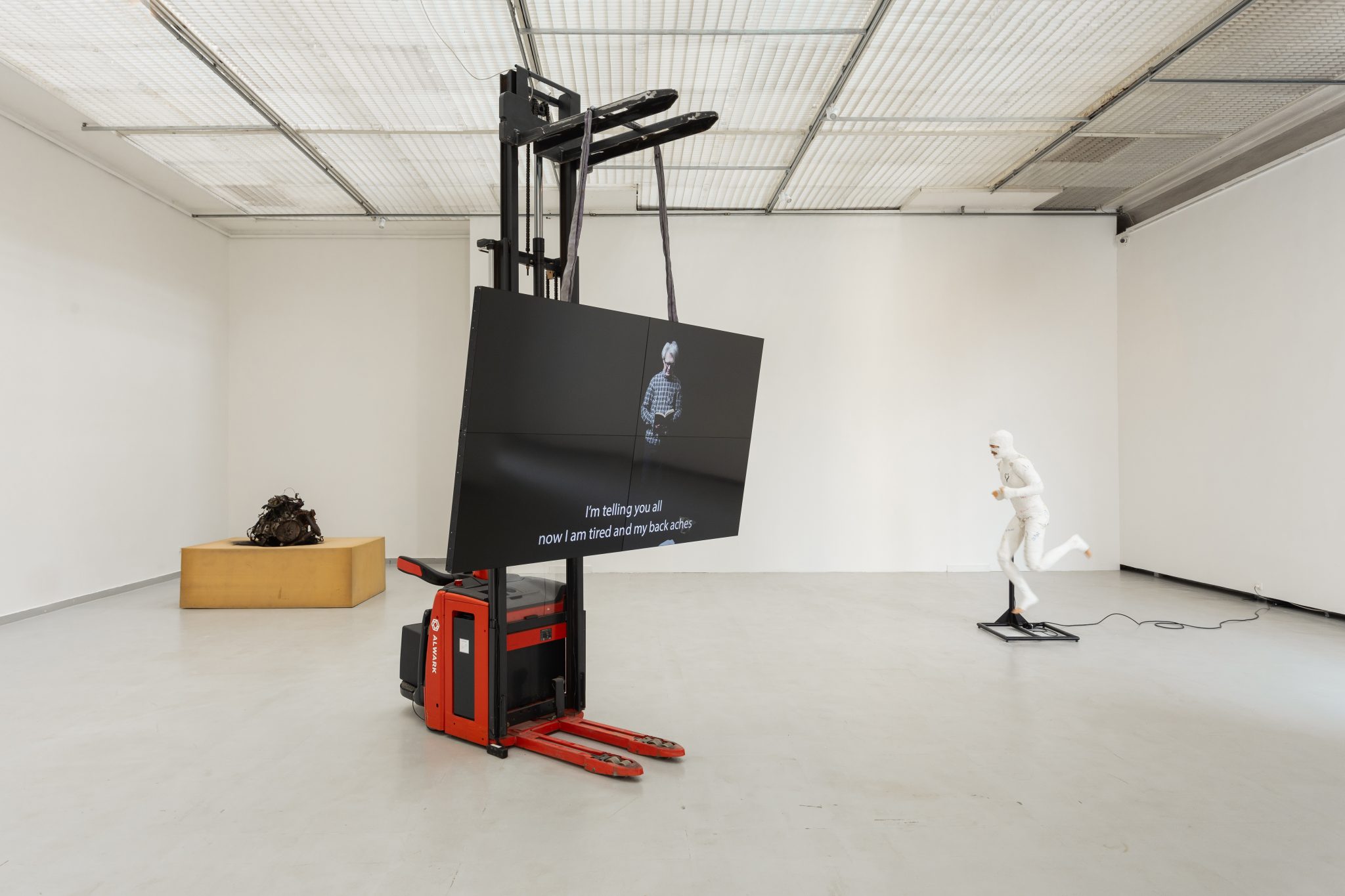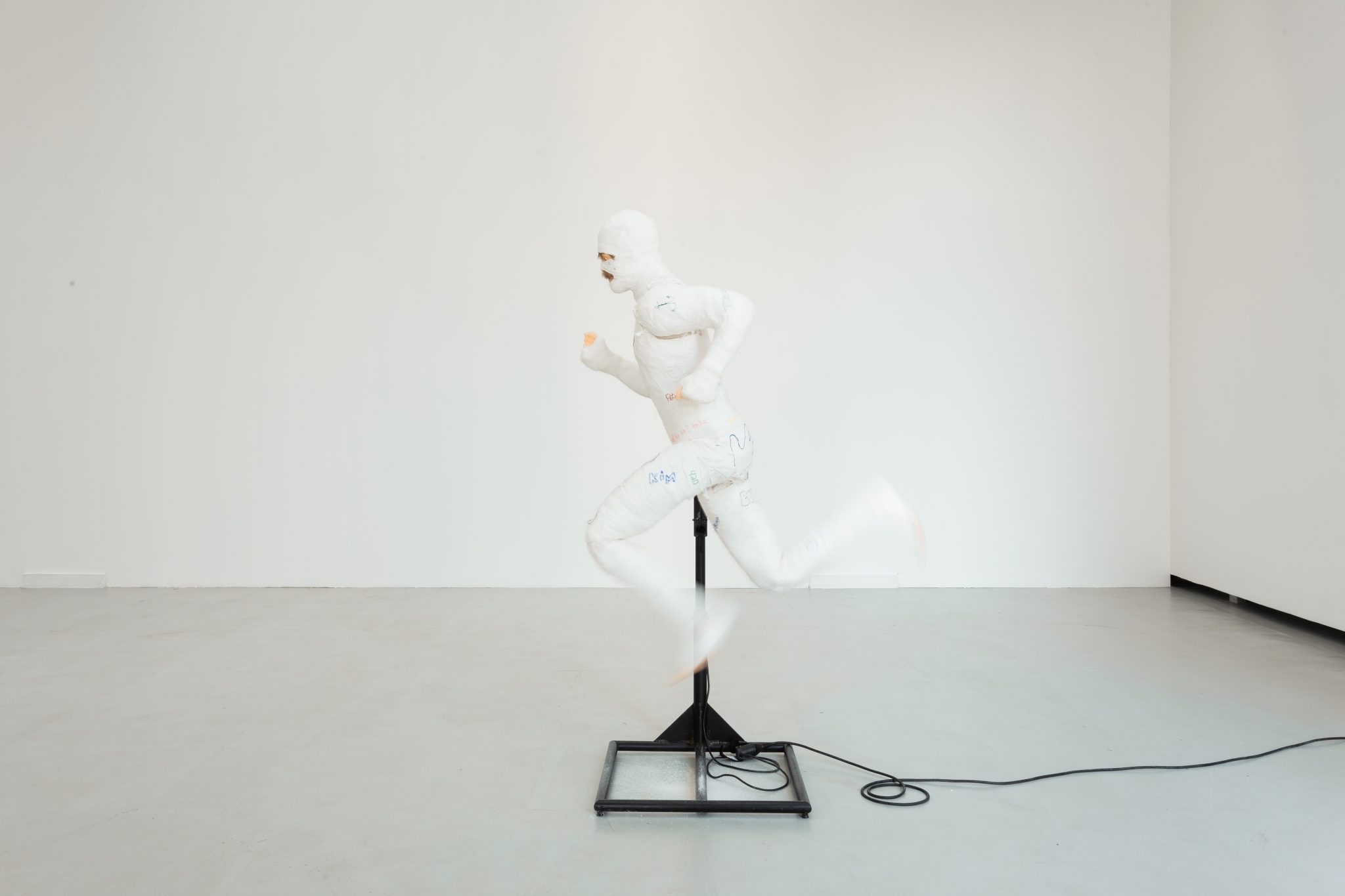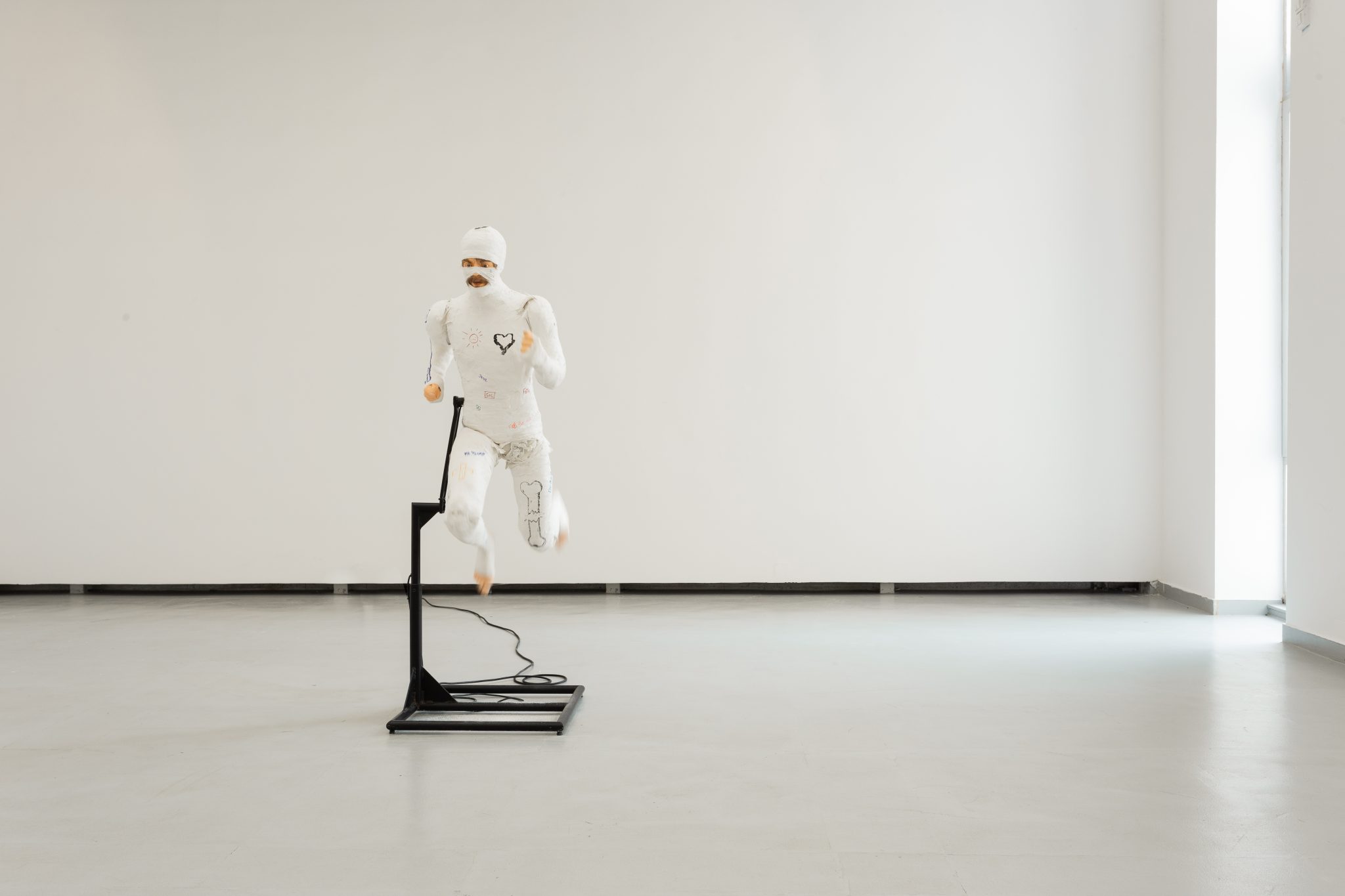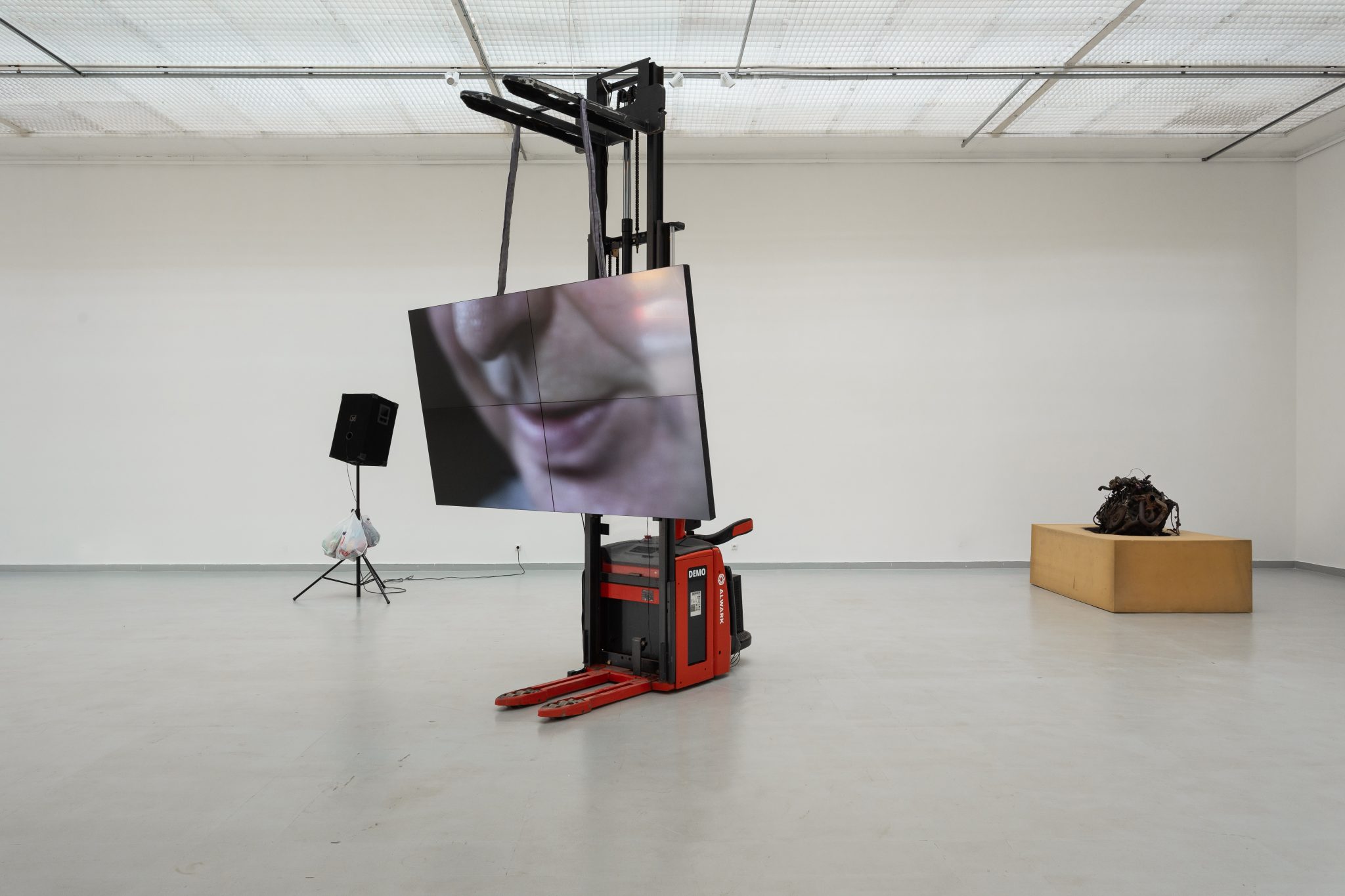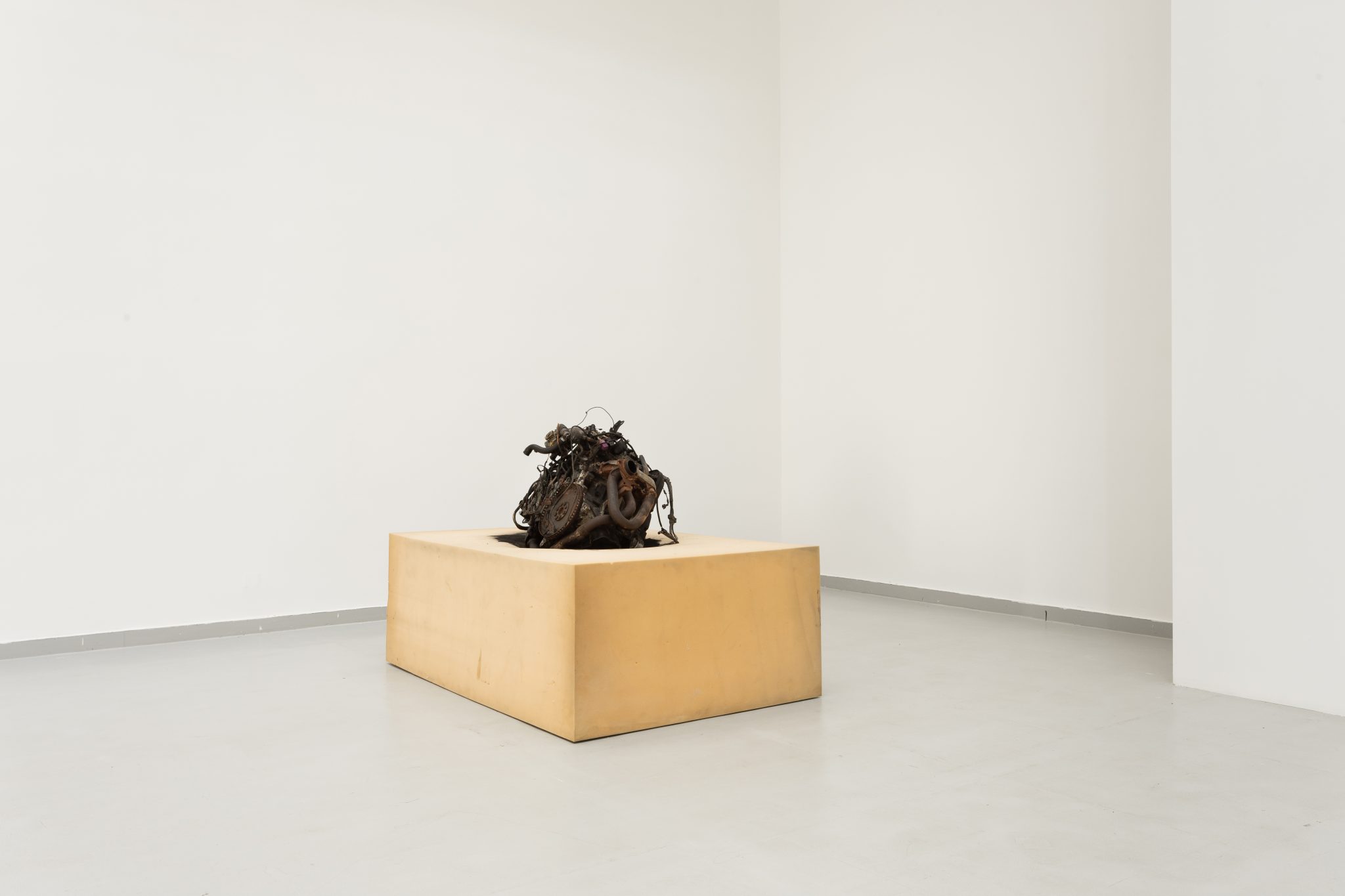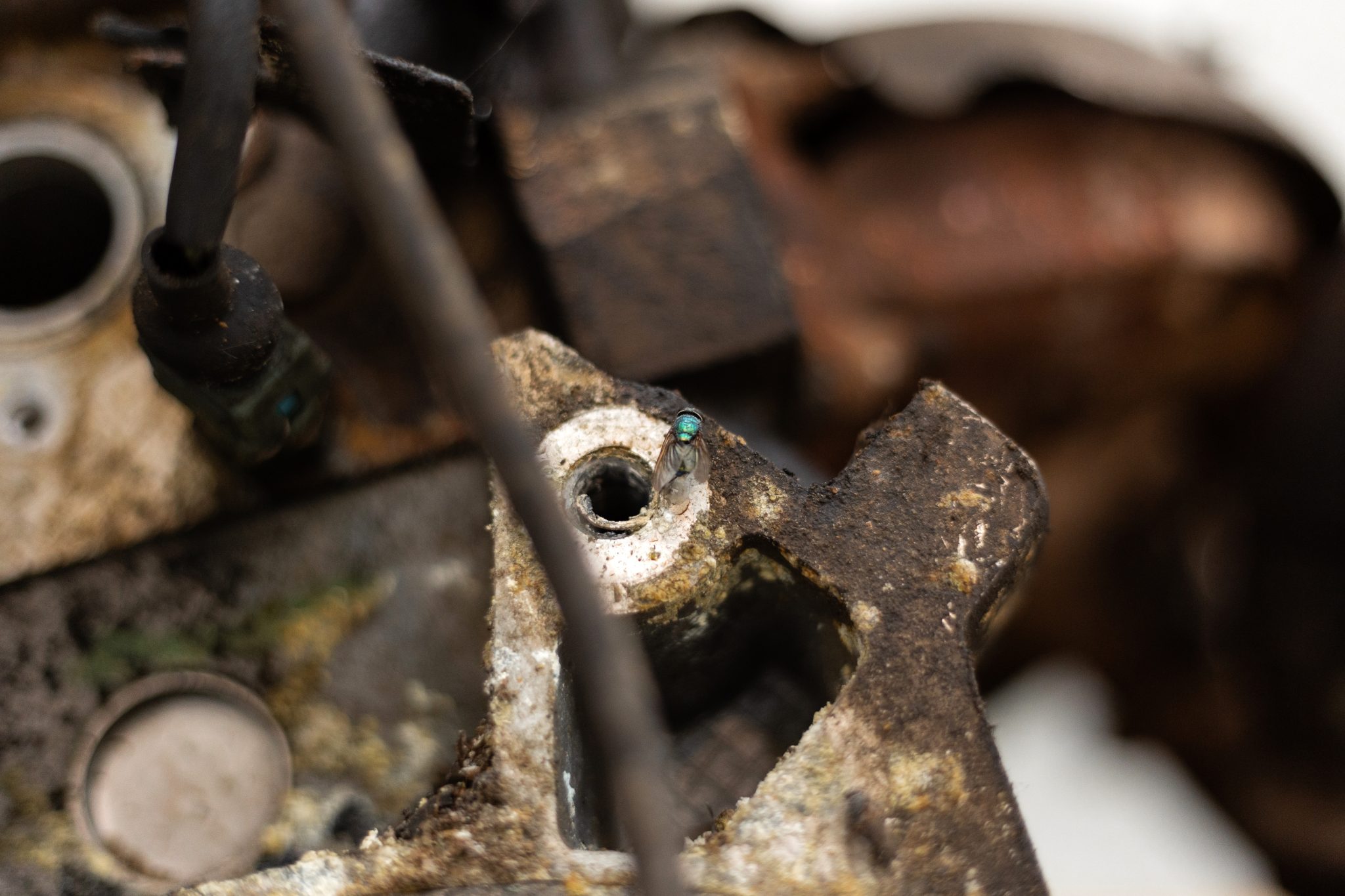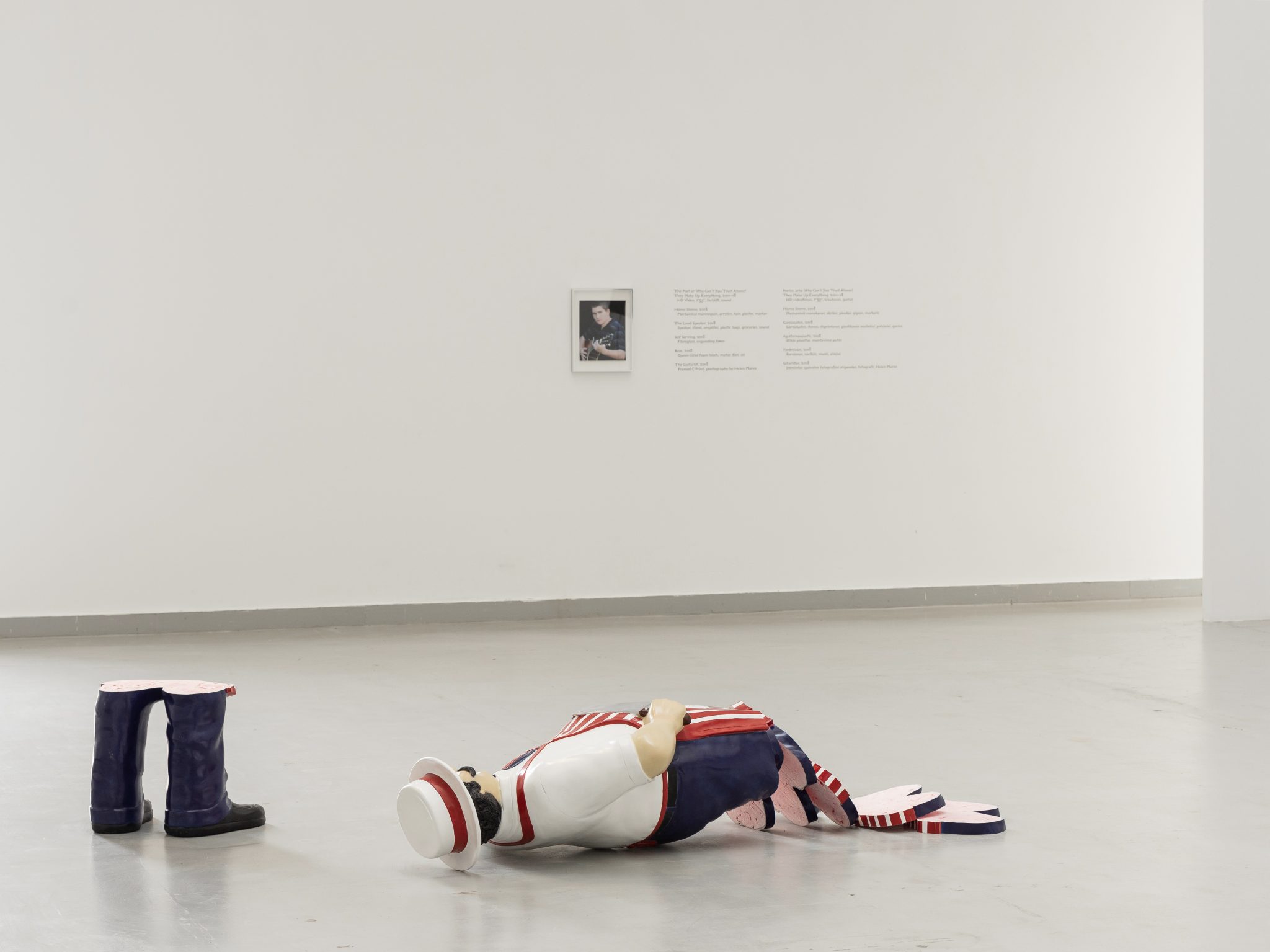
Midway upon the journey of our life
I found myself within a forest dark
For the straightforward pathway had been lost.
– Dante Aligheri, Divine Comedy, Inferno, Canto I, 1320.
The Barbarous Ages! The Obscure Ages! The Dark Ages! The Leaden, the Monkish, the Muddy Ages! According to popular history, the Middle Ages was a millenary of paganism, invasion, superstition, poverty, disease, violence, feudalism, transition, intolerance, contamination, ignorance, and regression. A time in between much more important times, an epoch where innovation was suspended and progress stalled. Like the midlife malady of modern man, the Middle Ages was a time of crisis. Things just didn’t advance as anticipated.
Simon Dybbroe Møller’s solo exhibition at the CAC in Vilnius begins “in medias res”, but was a long time coming. Built around the video The Poet, or Why Can’t You Trust Atoms? They Make Up Everything (2018) this show signals the culmination of Dybbroe Møller’s anachronism trilogy. Three videos about seemingly disparate, yet oddly specific objects or beings, things that are too late, things that belong to the past but, by haunting the present, cause a disruption in time – products of a kind of expected evolution. The first in the series, Animate V (2012), examines the ill-fated creation of the Renault Avantime, a crude turn-of-the-century amalgamation of coupé and van, meant for the vanguard family. The sequel Cormorous (2016) features the cormorant, a bird often regarded as a clumsy throwback of evolution. Concluding the cycle, The Poet, stars celebrated Danish writer Peter Laugesen reading texts from the last 40 years, juxtaposed with computer generated images of smoke, mud, and drums being played by ghostly drumsticks. The video posits the modern avant-garde poet as a thing, as an anachronism – at once enviable and dinosaur-like. Free and untainted by Neo-Liberalism, off the grid and out of touch, more archetype than human.
Presented on a large flat screen dangling from a forklift, The Poet sits within a group of wildly singular objects in unusual yet familiar predicaments. An intestine-like, leaking motor resting on a queen-sized foam pedestal. A running mannequin encased in a full-body plaster cast, covered in adolescent scrawls. A sad and shameful looking loud speaker, loaded with groceries, softly rehearsing a growling repertoire while taking stock. A prototypical statue of a butcher, chopped up into slabs of mystery meat. Collectively these lonely protagonists in Simon Dybbroe Møller’s show constitute a murky in-between space where things leak and break, where the civil and the ideal perform a clumsy dance with the vulgar. Here the maladroit and muddled mass of masculine models mope around in a sort of purgatory, fatigued by the awareness that they are betwixt and between.
A small photograph on the wall shows an adolescent earnestly overlooking these bulky beasts, while holding a guitar. That guitar though – does he know how to play it? Not unlike an image of a baby drinking a pint of beer, or driving a car, the mimetic behavior of the young cultural producer reminds us that there is an outside to the complex and carefully cultured system we occupy. This young cultural producer accentuates the mess we are in, midway between infancy and senility. Welcome to The Middle Ages.
Simon Dybbroe Møller was born in 1976 in Aarhus, Denmark and lives and works in Berlin. Dybbroe Møller’s work questions and articulates how the development of media changes; how it feels to be bodies tumbling or stumbling through this world; how we change media and how media changes us. It tests the relationship between essential sensate qualities and the evolution of communication. Simon Dybbroe Møller has had solo exhibitions at Fondazione Giuliani in Rome, Kunsthalle Sao Paulo, 21er Haus in Vienna, Kunstverein Hannover, Frankfurter Kunstverein, West London Projects, Kunstmuseum Thun, Kunsthal Aarhus and the University of Michigan Museum of Art, among others. His work was included in the 5th Moscow Biennial, the 2nd Turin Triennial and the 9th Berlin Biennial and in group exhibitions at MOCA Detroit, KW Institute for Contemporary Art, Berlin; Palais de Tokyo, Paris; The Wattis Institute, San Francisco; Museum Ludwig, Cologne; Barbican, London; GAM, Turin; Statens Museum for Kunst, Copenhagen; MMK, Frankfurt; IMMA, Dublin; Centre Pompidou, Paris; Hamburger Bahnhof, Berlin, and Kunstverein München.
